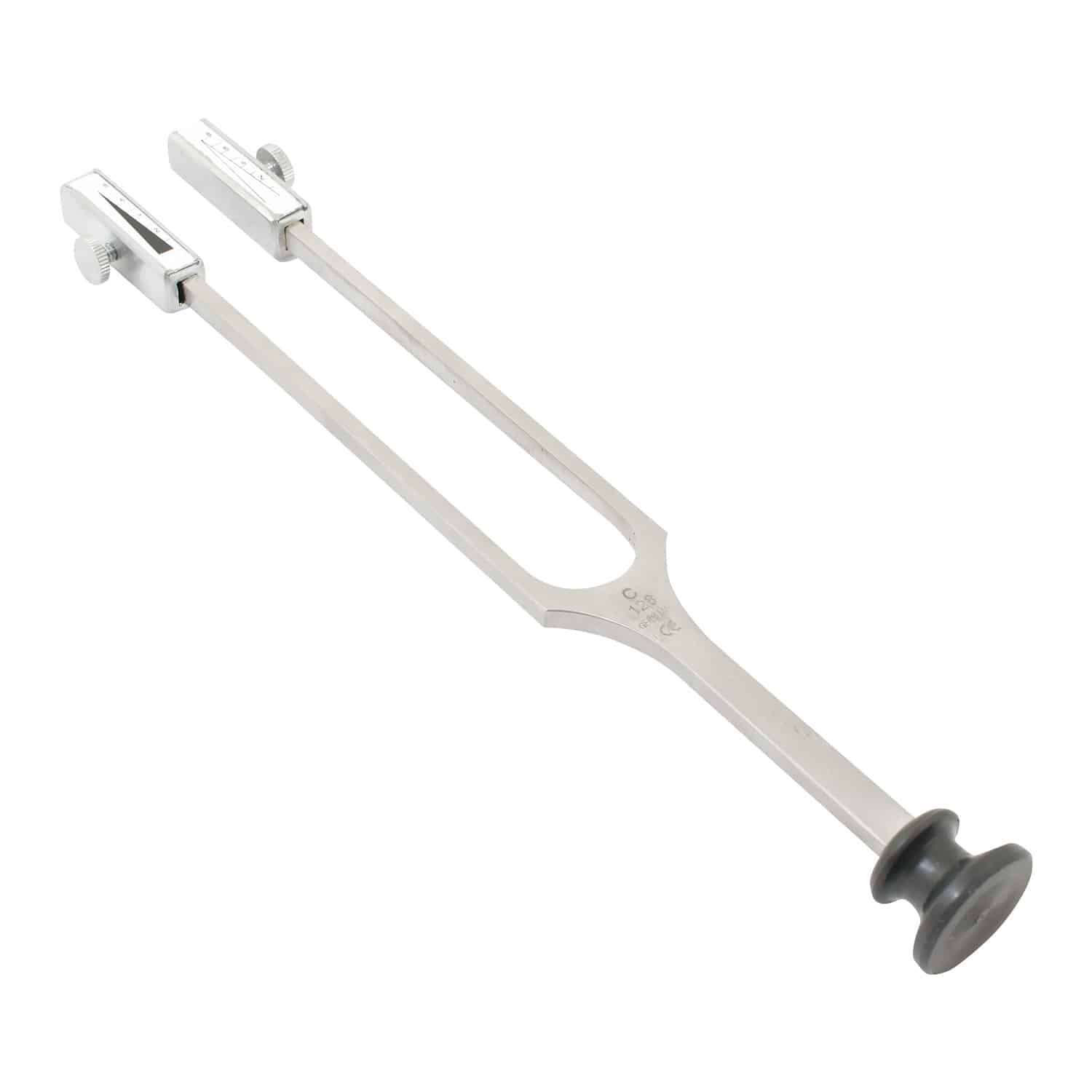

 256-Hz Tuning Fork: An Alternative – The 256-Hz tuning fork, along with 128-Hz tuning fork, is commonly used as part of neurological examination due to their greater tactile vibration characteristic. Higher-frequency tuning forks, for example, the 1024-Hz tuning fork, have a shorter tone decay time. In other words, they are better felt than heard. For the Weber test, the stem or handle of the vibrating tuning fork is placed at various points along the midline of the skull and face. Lower-frequency tuning forks like the 256-Hz tuning fork provide greater tactile vibration. At this frequency, it provides the best balance of time of tone decay and tactile vibration. 512-Hz Tuning Fork – In clinical practice, the 512-Hz tuning fork has traditionally been preferred. Occasionally, one can get a mixed hearing loss, which is a combination of the 2 hearing loss.Īn ideal tuning fork of choice for the Weber test would be one that has a long period of tone decay, in other words, the tone maintains/lasts long after the tuning fork has been struck, and cannot be detected by sense of bone vibration, therefore preventing misinterpretation of the vibration as sound. Conductive hearing loss is due to problems with the sound-conducting system, while sensorineural hearing loss is due to problems with the sound-transducing system, the auditory nerve or its central pathways. The Weber test, along with its paired Rinne test, is commonly used to distinguish the site and likely cause of hearing loss. Hearing loss may occur due to interruption at any point along these pathways.
256-Hz Tuning Fork: An Alternative – The 256-Hz tuning fork, along with 128-Hz tuning fork, is commonly used as part of neurological examination due to their greater tactile vibration characteristic. Higher-frequency tuning forks, for example, the 1024-Hz tuning fork, have a shorter tone decay time. In other words, they are better felt than heard. For the Weber test, the stem or handle of the vibrating tuning fork is placed at various points along the midline of the skull and face. Lower-frequency tuning forks like the 256-Hz tuning fork provide greater tactile vibration. At this frequency, it provides the best balance of time of tone decay and tactile vibration. 512-Hz Tuning Fork – In clinical practice, the 512-Hz tuning fork has traditionally been preferred. Occasionally, one can get a mixed hearing loss, which is a combination of the 2 hearing loss.Īn ideal tuning fork of choice for the Weber test would be one that has a long period of tone decay, in other words, the tone maintains/lasts long after the tuning fork has been struck, and cannot be detected by sense of bone vibration, therefore preventing misinterpretation of the vibration as sound. Conductive hearing loss is due to problems with the sound-conducting system, while sensorineural hearing loss is due to problems with the sound-transducing system, the auditory nerve or its central pathways. The Weber test, along with its paired Rinne test, is commonly used to distinguish the site and likely cause of hearing loss. Hearing loss may occur due to interruption at any point along these pathways. 
However, sound can also be transmitted via bone conduction where vibrations are transmitted via the skull and delivered directly to the cochlea which is buried within the temporal bone. The cochlea plays an important role in transducing these vibrations into nerve impulses via the auditory nerve (vestibulocochlear nerve) which is then delivered along the central pathways to the auditory cortex where it is processed and perceived as sound. The sound vibrations are then transmitted through the middle ear via the ossicular chain before it reaches the cochlea. The purpose of the outer ear is to direct sounds onto the tympanic membrane. The inner ear: Cochlea (organ of hearing), vestibular labyrinth (organ of balance)







 0 kommentar(er)
0 kommentar(er)
